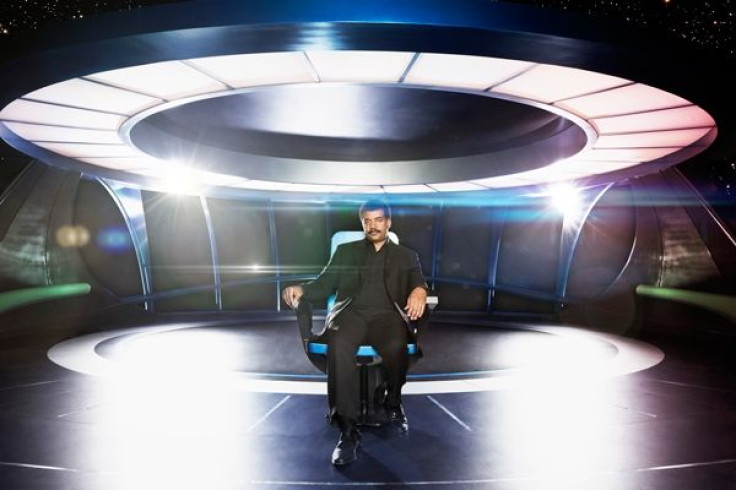‘Cosmos’ Premiere: NASA Goes In-Depth And Where To Watch The First Episode If You Missed It [VIDEO]

“Cosmos” returned to television with a primetime debut on Fox on Sunday. The show featured an introduction by President Barack Obama and on Twitter, NASA let viewers explore some of the featured moments in the episode, from Hubble images to the exploration of planets and interstellar space.
The first episode, “Standing Up in the Milky Way,” focused on our galaxy, and NASA has played a big role in its exploration. Astrophysicist Neil deGrasse Tyson has big shoes to fill, following in the footsteps of the late Carl Sagan, who created and hosted the original show in 1980, but his personality and sense of humor has already earned him plenty of fans. Much like Sagan, Tyson makes science accessible and fun while reveling in the beauty of scientific exploration.
Early ratings are in for "Cosmos," and it appears to be a hit. Full numbers will not be available until later on Monday but the Fox premiere averaged 5.8 million viewers, notes the Hollywood Reporter. The premiere of “Cosmos: A Spacetime Odyssey” featured many of NASA’s missions, and the space agency kept the conversation going by giving viewers an in-depth look at some of the coolest moments. The return of “Cosmos” also featured the return of the Cosmic Calendar, which condenses the 13.8 billion year existence of the universe into one calendar year.

“Cosmos” featured a high-definition image of Earth that was taken by NASA’s Suomi National Polar-orbiting Partnership satellite (Suomi NPP), while images from NASA’s Lunar Reconnaissance Orbit (LRO) satellite, the Solar Dynamics Observatory (SDO) mission and Hubble were also featured.
As for planetary exploration, the Cassini mission is observing Saturn and Curiosity and Opportunity are exploring Mars while coming missions to Jupiter and Pluto were highlighted in “Cosmos.”
Of course, exploring the Milky Way would not be complete without mentioning some of the most amazing achievements by NASA and joint ventures like the Hubble Space Telescope. Voyager 1, launched on Sept. 5, 1977, has reached interstellar space and is the first man-made object to go beyond our solar system. Its twin, Voyager 2, is right behind Voyager 1 and should reach interstellar space in a couple of years. Hubble was also able to spot what could be the oldest known star, HD 140283.
The two Voyager spacecraft are performing well, and Voyager 1 is carrying a golden record containing special messages from Earth. The instructions, images and greetings were selected by a committee chaired by none other than Sagan.
A full gallery of NASA images featured in, or inspired by, "Cosmos" can be viewed here. If you missed Sunday's premiere of "Cosmos," you can watch it online or On Demand. "Cosmos" airs on Sundays at 9 p.m. EDT.
© Copyright IBTimes 2024. All rights reserved.












